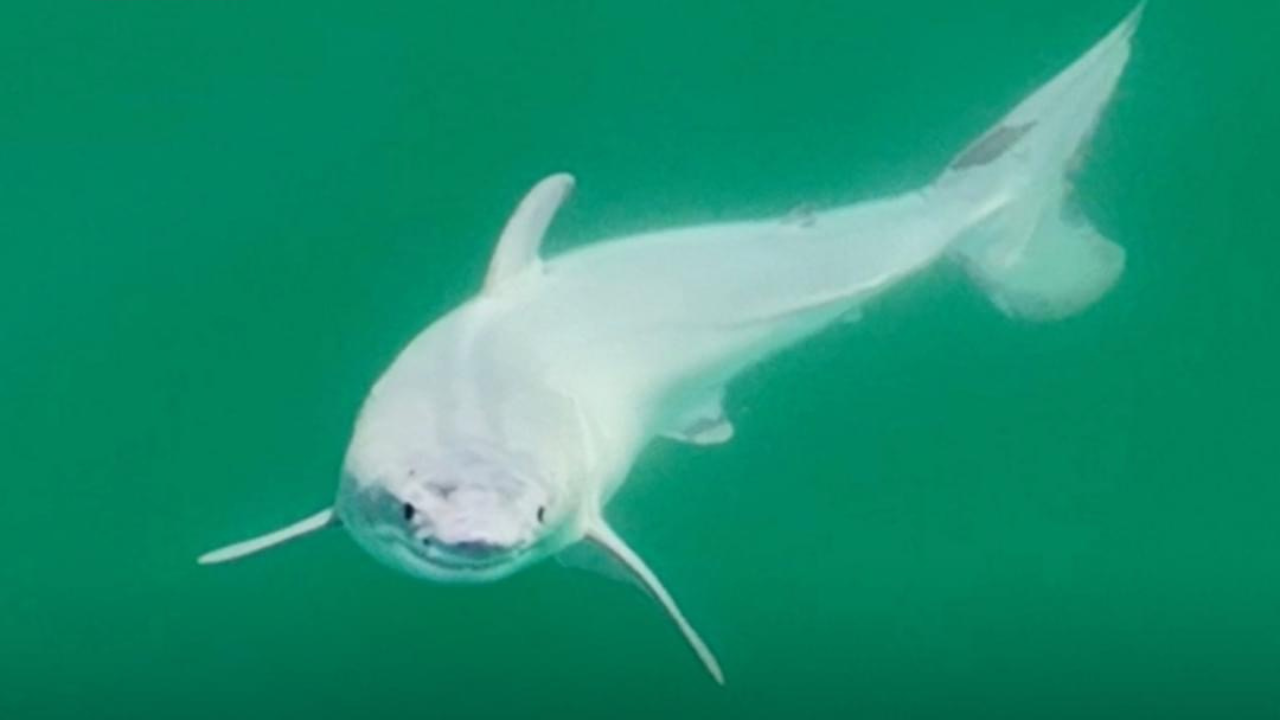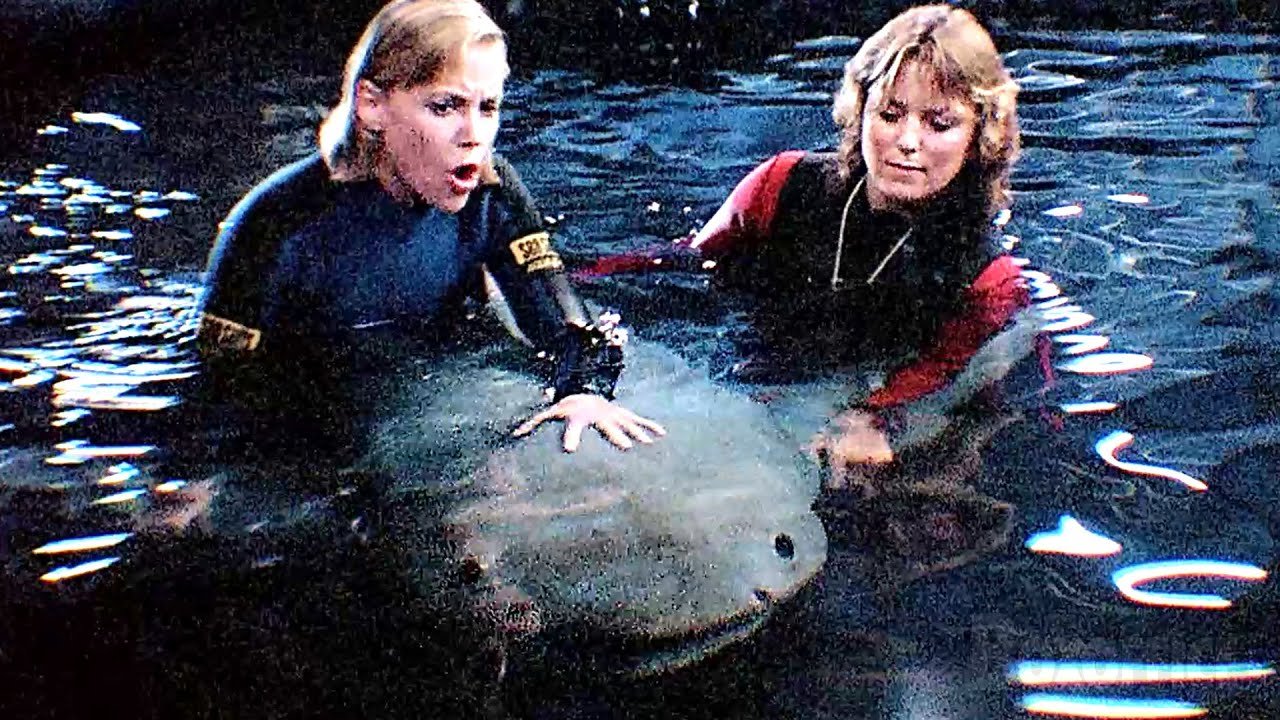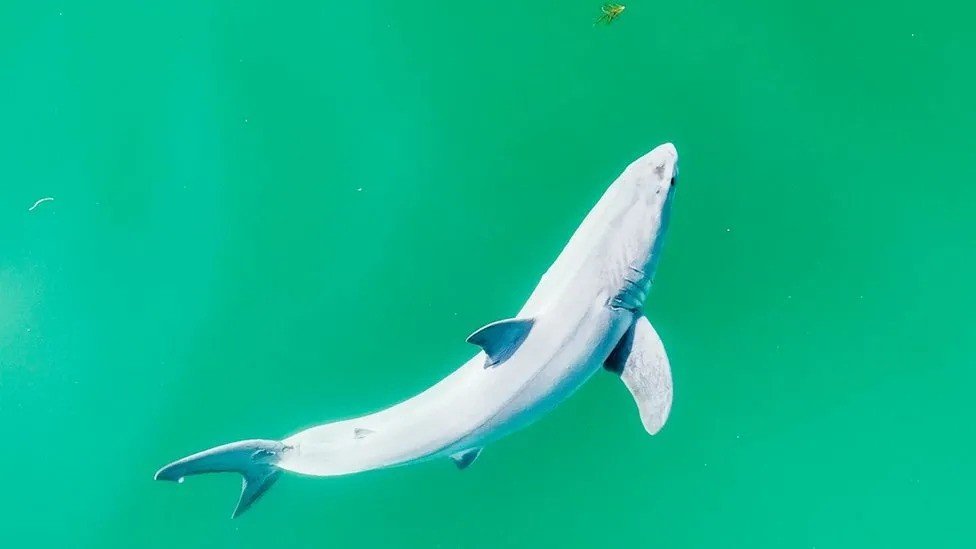You're gonna need a bigger crib: Newborn JAWS shark caught on film for first time?
Our understanding of great white sharks may have just taken a significant leap forward, thanks to the efforts of a YouTuber. While the birth of a great white shark has remained elusive to experts, Carlos Gauna, known online as TheMalibuArtist, may have come as close as anyone to capturing this rare event.
Carlos has gained popularity on YouTube for his drone footage capturing stunning visuals of sharks from above. He describes the experience as akin to observing them through an unnoticed magnifying glass.
(c) The Malibu Artist
His videos, garnering millions of views, often depict great whites swimming in close proximity to humans, occasionally stirring moments of heightened adrenaline. While Carlos has yet to witness any aggressive behavior towards humans, he acknowledges the instinctual response.
White flakes were left behind in the water behind the shark (c) The Malibu Artist
Last year, near Santa Barbara, California, Carlos encountered a sighting unlike any other. Amidst his usual shark sightings, he spotted a peculiar white shark with an almost albino appearance surfacing. As he brought his drone closer, the shark's unique features became clearer, with a white layer appearing to flake off its body.
An adult Great White shark will grow to be up to around 20.9 feet (6.4 m) long (image credit unknown)
Accompanied by shark researcher Phil Sternes from the University of California, Riverside, Carlos was astonished by the discovery. Phil noted the shark's distinctive features, reminiscent of shark embryos and newborns, particularly its rounded fins and the apparent mucus-like substance on its body.
James Worthington from the University of San Diego assisted in estimating the shark's size, suggesting it was approximately 1.5 meters (4.9 feet) long, consistent with a newborn.
JAWS 3-D (1983) features a baby Great White shark that gets trapped inside a waterpark after following it’s mother
Their observation has been documented in the journal Environmental Biology of Fishes. However, some marine biologists caution against hastily concluding it as a newborn great white shark, citing alternative explanations for the white layer, such as a skin disease.
Dr. Chris Lowe from California State University's shark lab acknowledges the finding's interest but emphasizes the need for more evidence, given the possibility of various explanations.
(c) The Malibu Artist
Phil and Carlos recognize the potential for a skin condition but highlight the unique aspects of the shark's appearance. Despite differing opinions, they remain intrigued by the evidence presented in Carlos's video, including the shark's behavior, fin shape, and size.
Drones have revolutionized shark filming, enabling not only enthusiasts like Carlos but also scientists to study shark behavior extensively. Dr. Lowe mentions a recent study using drones to monitor juvenile white sharks' interactions with humans along California beaches.
The animatronic Great White shark created for JAWS was named ‘Bruce’ after Steven Spielberg’s lawyer
Carlos, armed with patience and his drone, aspires to capture the elusive moment of a great white shark's birth, furthering our understanding of these majestic creatures.
If you would like to write for The Daily Jaws, please visit our ‘work with us’ page
For all the latest Jaws, shark and shark movie news, follow The Daily Jaws on Instagram, Twitter and Facebook.






